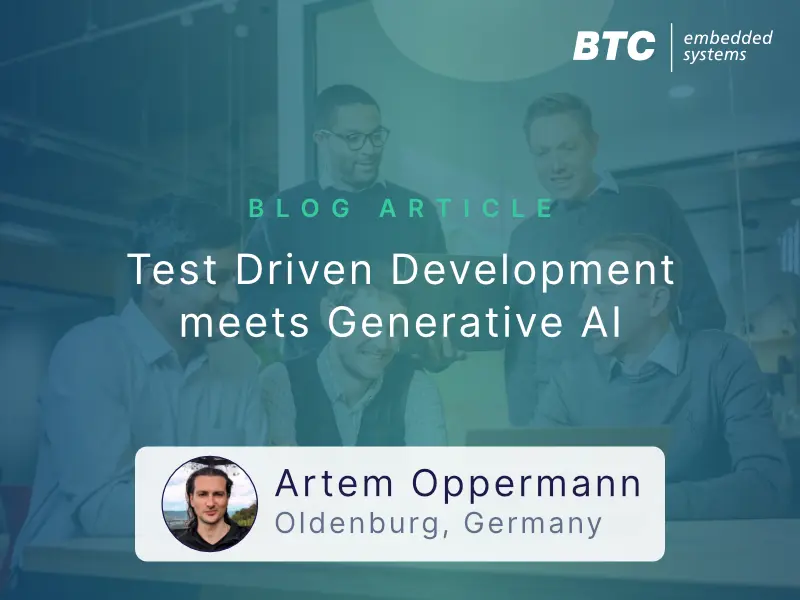What makes Software Unit Testing a foundation in Shift-Left Testing?

In the age of Software Defined Vehicles (SDVs), the way we develop, and test automotive software is undergoing a fundamental shift – both technologically and philosophically. One of the most impactful paradigms driving this change is the Shift-Left testing principle, which emphasizes testing earlier in the development lifecycle to catch bugs sooner, reduce costs, avoid recalls […]
Test Driven Development Meets Generative AI

Test Driven Development (TDD) has long been a proven approach for improving code quality in traditional software projects. By writing tests before code, developers can ensure that every function is verified from the start. However, creating such tests is often time-consuming and laborious. This is where generative AI comes in. This new technology can massively […]
Why a „shift-left“ testing approach is not just a new buzz word, but is actually a necessity

In the dynamic domain of embedded automotive software, achieving high quality, safety, and performance is non-negotiable. This is becoming even more important when looking at topics like Software-Defined Vehicles. For over 20 years, our company has enabled automotive OEMs and suppliers to start testing as early as possible in the development process. In the last […]
3 Reasons for Model-Based Development Approach

Model-Based Development (MBD) changed the automotive software engineering by aligning with the human cognitive process, unlike traditional C or assembler coding. MBD enables a Left-Shift approach, reducing costs by deducting issues in the early development cycle. This blog article summarizes 3 reasons for Model-Based Development Approach Reason #1 Higher Abstraction Level In the early days, […]
Seamless Testing for Model-Based Developers: Directly from Simulink

1. The Need for Early Testing Agile Software Development: Agile methodologies have revolutionized software development by shifting testing as close as possible to the development tasks, a concept known as “Shift left.” This approach emphasizes finding problems early in the development cycle, adhering to the principle of “Fail early – Fail cheap.” According to a study, […]
How to Automate Dependency Management: Part 2

If you’ve ever had to deal with manually migrating dependencies to the latest version, you know how difficult and time-consuming it can be to upgrade and validate your model. Thankfully, by leveraging powerful modern dev-ops practices, don’t have to! By utilizing the power of automation and other powerful dev-ops best practices, you can let your […]
How to Automate Dependency Management: Part 1

Very few people develop their software from scratch. Why would they, after all, when so many others have already done the work for almost any algorithm you could think of? Rather than re-invent the wheel, it’s more efficient (and more fun) to work on the novel tasks in front of you and let someone else […]
Best Practices for an Efficient Test of Simulink Models

Best Practices for Efficiently Testing Simulink Models In Model-based Development (MBD), Embedded Software Engineers create software systems with the help of model visualization and analysis. As the complexity of these models grows and the need to meet safety standards increases, the testing procedure becomes more time-consuming. Therefore, conducting extensive tests on these models before generating […]
